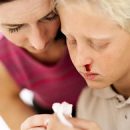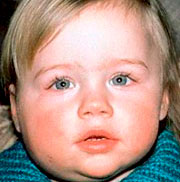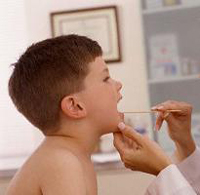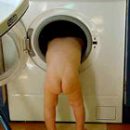Cocklush - a serious infectious disease, in which such symptoms of the cough have such symptoms in children as a strong cough to vomiting and high temperature. How cough is manifested, its incubation period and other aspects of the disease.
Content
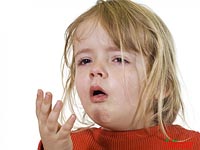 The most typical symptoms of the cough in children are usually the strongest cough up to vomiting, the intensity of which is growing the day by day, the total weak state, which all the time deteriorates and increasing body temperature.
The most typical symptoms of the cough in children are usually the strongest cough up to vomiting, the intensity of which is growing the day by day, the total weak state, which all the time deteriorates and increasing body temperature.
Invisible cough satellites, the incubation period of which lasts from 3 to 14 days, are microbes of Bordadell family, which are usually striking kids 1-1.5 years. Life life of microbial sticks is very short. You can get infected only with air-droplet and with personal contact through joint games, laughter, conversations, but not through toys or public items. In the incubation period, the kid feels even well, it does not disturb his headache, nor a strong cough, nor high temperature. Right here—then the immunity comes into. If the child was previously vaccinated against the infectious cough, then the further development of the disease will not happen. Thus, the cough microbes often live in the body and do not cause diseases. After the suffered cough on the protection of children's health costs persistent lifelong immunity.
The kids are particularly infectious in the first days of the disease, when the symptoms of the early cough in children sometimes erased and young mothers sometimes take these manifestations for colds or flu. When developing a cough, during the incubation period of the disease, the overall condition of the child is not very oppressed. Deterioration of well-being occurs when the next period of the disease occurs — Catarial when all the well-known cough symptoms are pronounced due to the fact that toxins get into the blood, which produces bacterium-causative agent, provoking strong painful cough. It is characterized by the appearance of the patient kid, noticeably rapid breathing, redness of the face to blue at the time of the cough attack. Then the period of spasmodic cough occurs and all protective forces of the body come to the fight against the disease. And finally, in 5-7 days «comes» Permission period: Cough is less and less, the attacks are not so intense, the sputum becomes mucinous-purulent. In the blood test, there is a positive dynamics: ESO and leukocyte levels decrease. There is a period of very slow recovery after the cough.
Care and Cockpit mode and after
It should be noted how important the care and regime is important to play a diet and vitaminotherapy in the fight against cough. The most serious attention should be paid to the diet of the patient. This is a fresh, prepared today, not irritating food stomach, high-quality water for drinking without gas, all sorts of phyto- and fruit teas, berry fruits and ragners. After all, only painstaking care and increased attention to the patient, the kid will not allow serious complications, and the treatment is known to be carried out most often at home. It is difficult to overestimate the value of regular ventilation of the room and systematic walks in the fresh air, especially in the morning, to push the patient during the cough, after which still comes «fragile» Period of improvement.
True friend and reliable shield — Immunity against Coc Thang
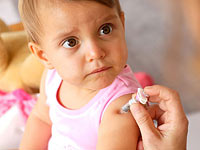 Usually an infection attacks weakened, inclined to the colds of kids, and older children, already somewhat faster and clapped from the cough, saves immunity. Congenital immunity formed by maternity antibodies continues for a short period of time, and then the post is becoming a post-excited barrier. Kids are securely protected due to mass vaccination, without which serious complications are inevitable in the form of pneumonia, nasal bleeding, respiratory stop. Increased attention requires this infectious disease in infants. In this age period, the disease is manifested by a very short catarrhal period, the spasmodic period is rapidly coming, which can lead to a stop of breathing in babies.
Usually an infection attacks weakened, inclined to the colds of kids, and older children, already somewhat faster and clapped from the cough, saves immunity. Congenital immunity formed by maternity antibodies continues for a short period of time, and then the post is becoming a post-excited barrier. Kids are securely protected due to mass vaccination, without which serious complications are inevitable in the form of pneumonia, nasal bleeding, respiratory stop. Increased attention requires this infectious disease in infants. In this age period, the disease is manifested by a very short catarrhal period, the spasmodic period is rapidly coming, which can lead to a stop of breathing in babies.
The disease, after which the body remains persistent immunity for life, is practically not repeated and does not require a re-diagnosis. Asymptomatic and atypical forms of the disease are characterized by the absence of major clinical manifestations or a lubricated flow, it is usually found only in adult patients.


